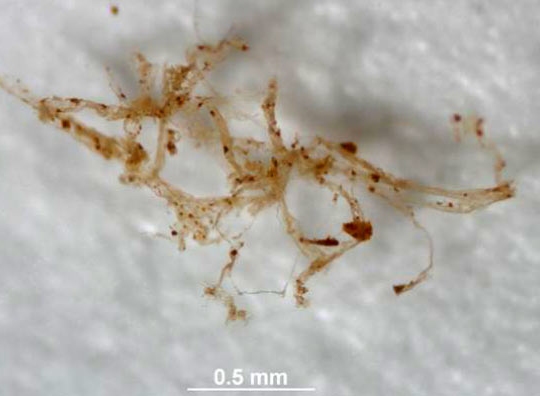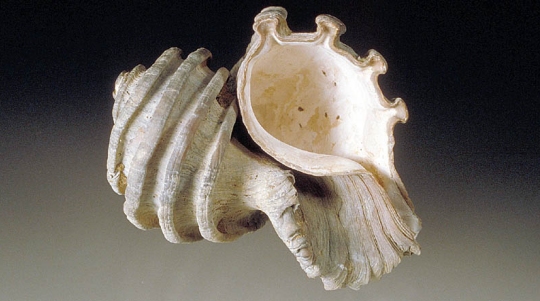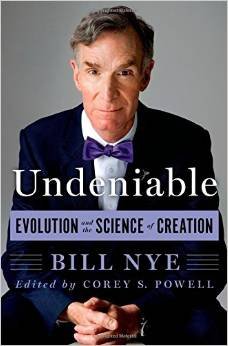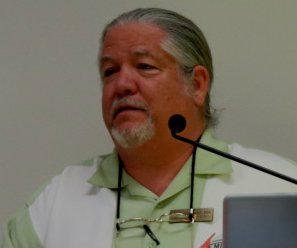
(Image credit: M. Schweitzer, North Carolina State University.)
In 2005, Dr. Mary Schweitzer shocked the paleontology community by reporting that she had found soft tissue in a Tyrannosaurus fossil that was thought to be 65 million years old.1 One type of soft tissue structure found appeared to be branching blood vessels like those shown in the picture above. The idea that blood vessels could have remained soft for millions of years is contrary to everything we currently know about biomolecules and their decay, so many in the paleontology community searched for some other explanation of Dr. Schweitzer’s find.
For example, its possible that despite its appearance, the structure isn’t composed of blood vessels at all. Instead, it could be the result of a recent colonization of bacteria or fungi. After all, when the blood vessels in a bone decay away, the “tunnels” in which they were housed remain. What if rather recently, a colony of bacteria took up residence in those same tunnels? These organisms often leave a slime (called a biofilm) behind, and if they left it in those “tunnels,” the biofilm would take the shape of the “tunnels.” That would make the biofilm look and behave a lot like blood vessels.
Such an explanation seemed to get some support back in 2008, when a major article was published in PLoS ONE.2 In that article, researchers reported on a survey they had done of many dinosaur bones. They found several examples of what appeared to be soft tissue in those bones, and they submitted some of those samples for carbon dating. The dating indicated that the samples were of very recent origin. In addition, they compared their samples to modern biofilms and modern collagen (a protein not made by bacteria). Their samples of apparent tissue resembled modern biofilms much more than modern collagen, so they concluded:
When biofilms coat a substrate, and that substrate is subsequently removed, the biofilm will retain much of the original morphology. This can explain the quantity and similarity of structures found in fossil bone and indicates that these structures are unlikely to be preserved dinosaurian tissues but the product of common bacterial activities.
Since then, however, the analysis of a variety of soft tissue found in dinosaur bones has lent a lot of support to the idea that these tissues are not biofilms, but are genuine dinosaur tissue (see here, here, here, and here). It seems that the definitive paper has finally been published, showing, at minimum, that soft blood vessels found in one dinosaur bone do come from the dinosaur itself.
Continue reading “Soft Blood Vessels from a Dinosaur Fossil”









